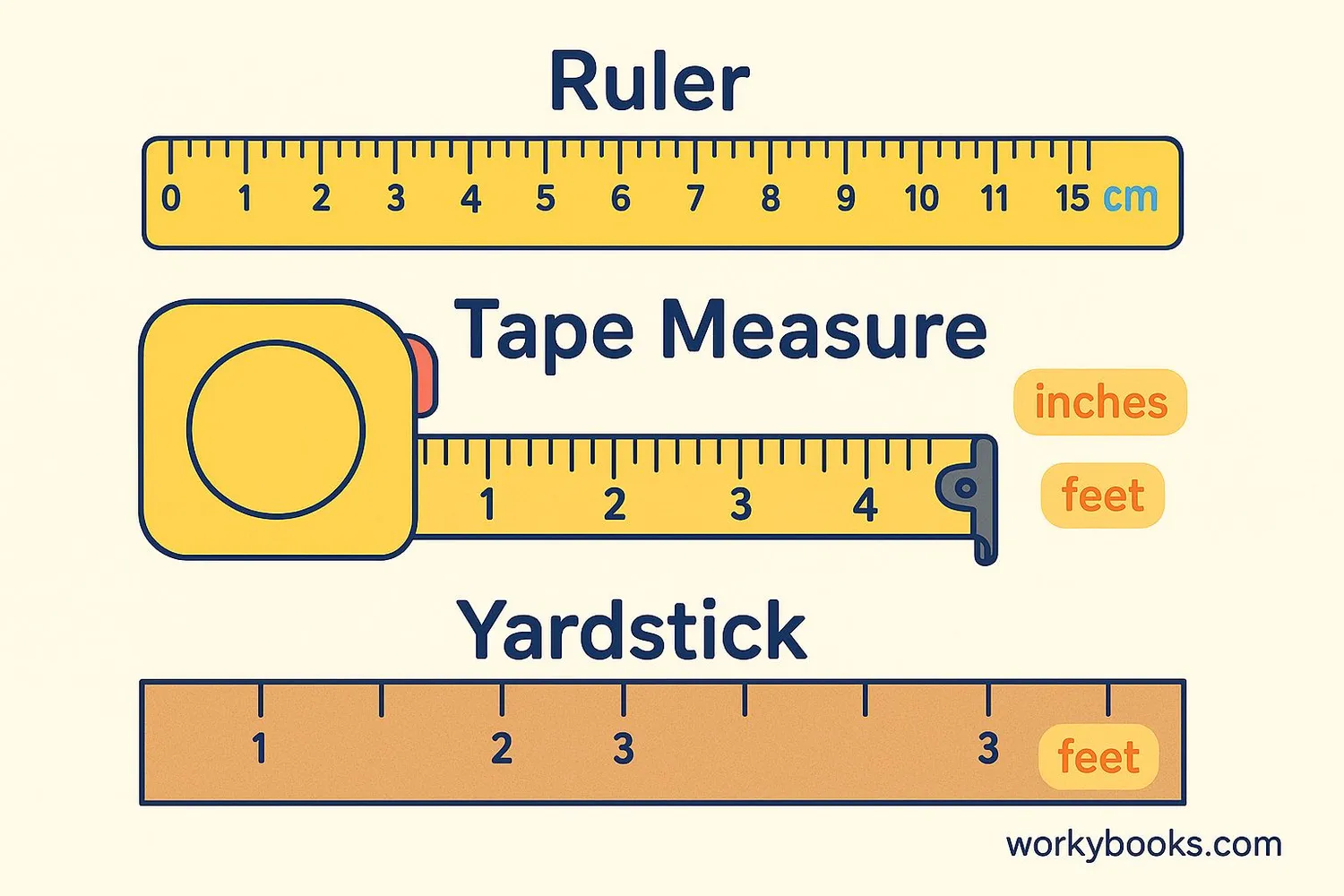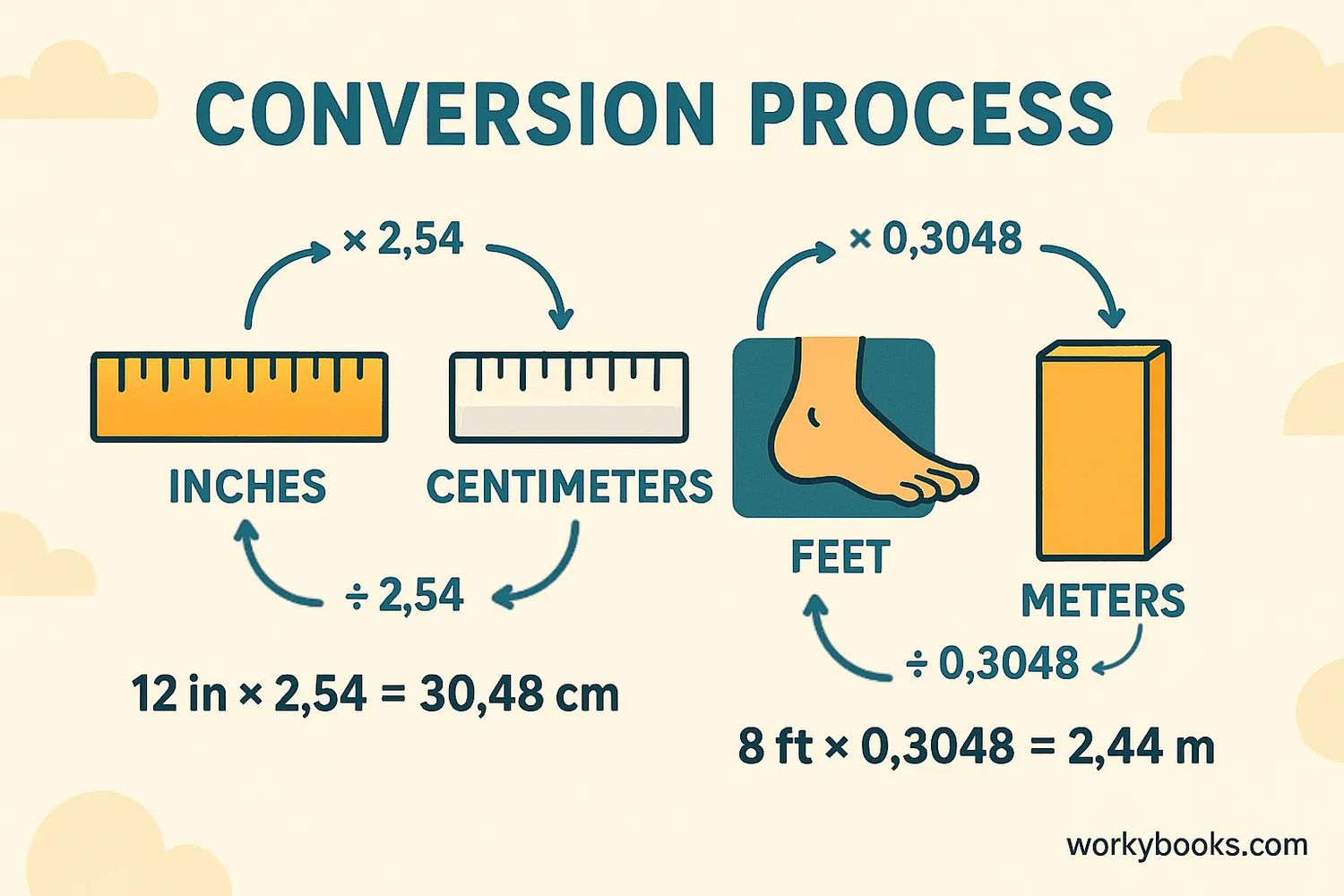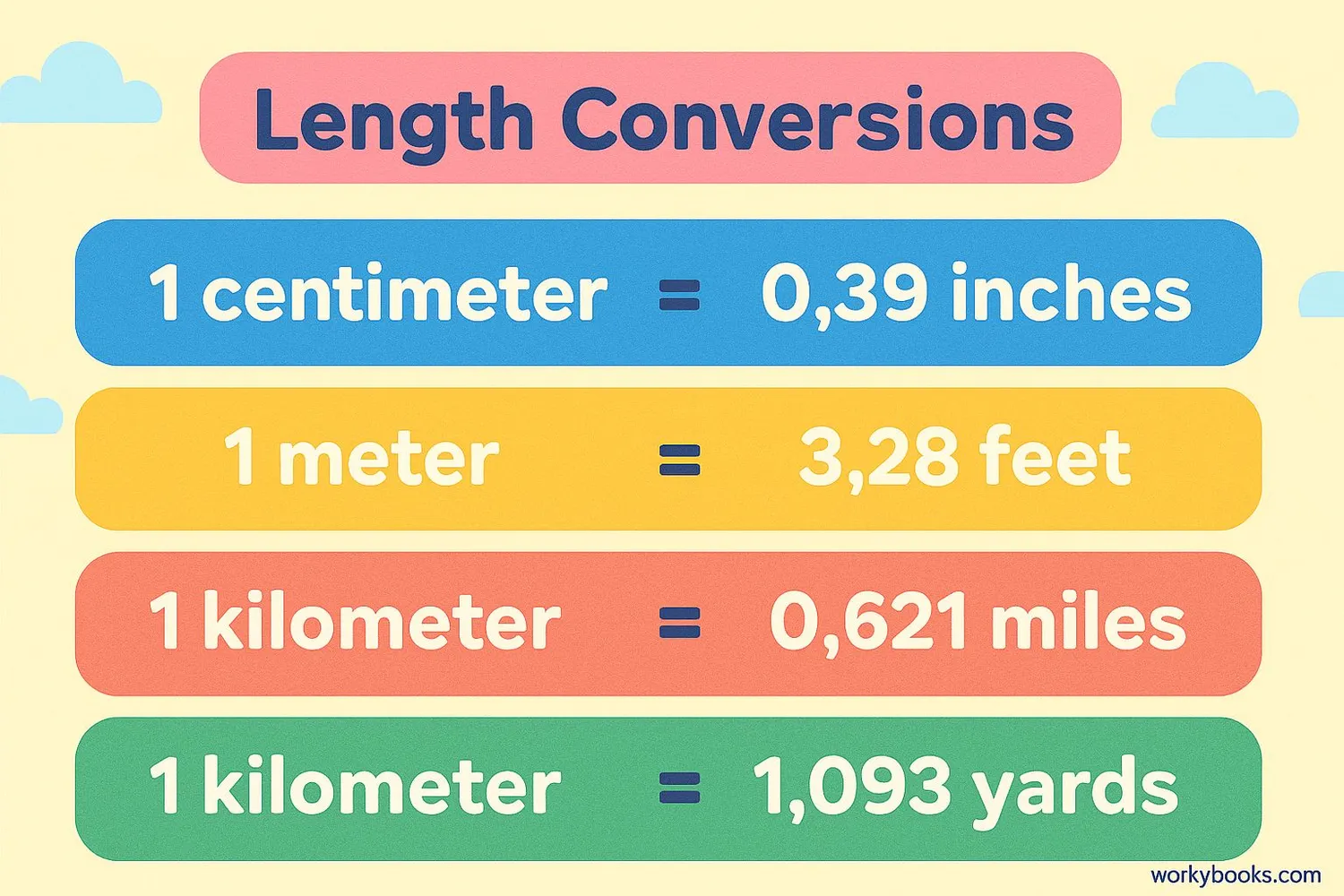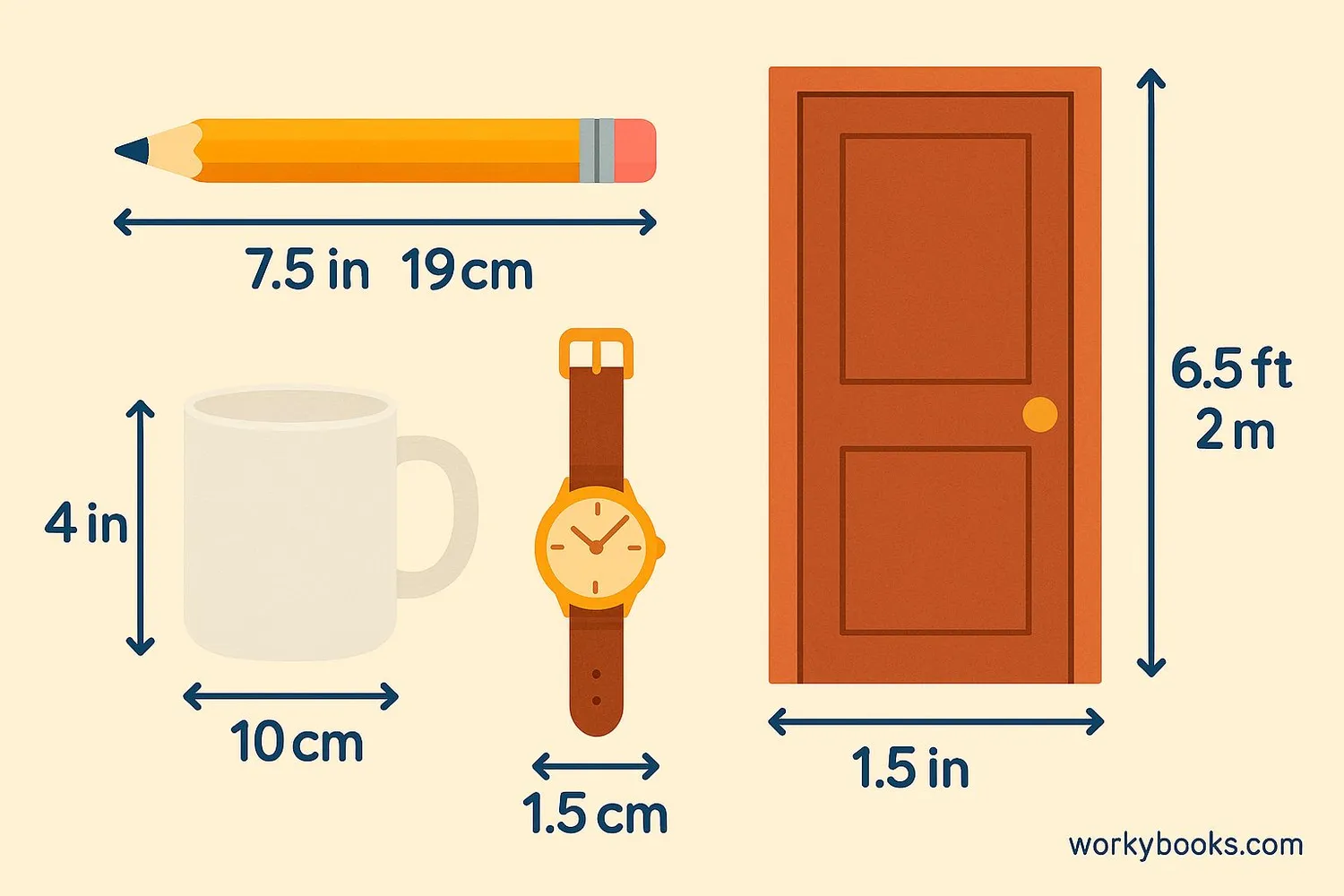Length Conversion - Definition, Examples, Quiz, FAQ, Trivia
Learn to convert between different measurement units with easy explanations and practice activities
What is Length Conversion?

Length conversion means changing a measurement from one unit to another. We measure length to describe how long, tall, or far apart things are. Different places around the world use different measurement units, so it's helpful to know how to convert between them.
The two main measurement systems are:
Metric System - Used by most countries and scientists. Includes millimeters (mm), centimeters (cm), meters (m), and kilometers (km).
Imperial System - Used mainly in the United States. Includes inches (in), feet (ft), yards (yd), and miles (mi).
Understanding how to convert between these systems helps us communicate measurements clearly and solve real-world problems.
Key Concept
Conversion means changing from one unit to another while keeping the same measurement value.
How to Convert Length

Converting length measurements is like translating between different measurement languages. Here are the basic steps:
1. Identify what units you're starting with and what units you want to convert to.
2. Find the conversion factor (how many of one unit equals another).
3. Multiply or divide using the conversion factor.
Common Conversion Factors
Example: Convert 24 inches to centimeters
Step 1: We know 1 inch = 2.54 cm
Step 2: Multiply 24 inches by 2.54
Step 3: Calculate: 24 × 2.54 = 60.96 cm
So 24 inches equals 60.96 centimeters.
Remember
When converting to a smaller unit, your number gets bigger. When converting to a larger unit, your number gets smaller.
Length Conversion Charts

Conversion charts help us quickly find equivalent measurements without calculating each time. Here are useful charts for converting between common units:
Inches to Centimeters Conversion Chart
| Inches (in) | Centimeters (cm) |
|---|---|
| 1 in | 2.54 cm |
| 6 in | 15.24 cm |
| 12 in | 30.48 cm |
| 18 in | 45.72 cm |
| 24 in | 60.96 cm |
| 36 in | 91.44 cm |
| 48 in | 121.92 cm |
Feet to Meters Conversion Chart
| Feet (ft) | Meters (m) |
|---|---|
| 1 ft | 0.30 m |
| 3 ft | 0.91 m |
| 5 ft | 1.52 m |
| 10 ft | 3.05 m |
| 15 ft | 4.57 m |
| 20 ft | 6.10 m |
| 25 ft | 7.62 m |
Chart Tip
You can use these charts as a reference when you need to quickly convert measurements without calculating.
Real-World Examples

Let's practice conversion with some real-world examples:
Example 1: A standard sheet of paper is 11 inches long. How long is it in centimeters?
Solution: 11 × 2.54 = 27.94 cm (about 28 cm)
Example 2: A soccer field is 100 meters long. How long is it in feet?
Solution: 100 × 3.28 = 328 feet
Example 3: Maria is 5 feet tall. How tall is she in centimeters?
Solution: 5 × 30.48 = 152.4 cm
Example 4: The distance to the park is 1.5 kilometers. How many miles is this?
Solution: 1.5 × 0.62 = 0.93 miles (almost 1 mile)
Practice converting measurements you see around you - your height, the length of your room, or the distance to school!
Conversion Tip
Remember that approximate conversions are often good enough for everyday use. You don't always need exact numbers!
Conversion Practice Quiz
Test your conversion skills with this 5-question quiz. Choose the correct answer for each question.
Frequently Asked Questions
Here are answers to common questions about length conversion:
Measurement Trivia
Discover interesting facts about measurement systems:
Origin of the Meter
The meter was originally defined in 1793 as one ten-millionth of the distance from the equator to the North Pole. Today, it's defined as the distance light travels in a vacuum in 1/299,792,458 of a second!
Global Standard
Over 95% of the world's population uses the metric system in daily life. Only three countries (United States, Liberia, and Myanmar) have not officially adopted the metric system as their primary system.
Space Measurement
NASA uses metric measurements for all its space missions. The Mars Climate Orbiter was lost in 1999 because one engineering team used metric units while another used imperial units for calculations.
Tallest Building
The Burj Khalifa in Dubai is the world's tallest building at 828 meters (2,717 feet). That's equivalent to about 82,800 centimeters!





